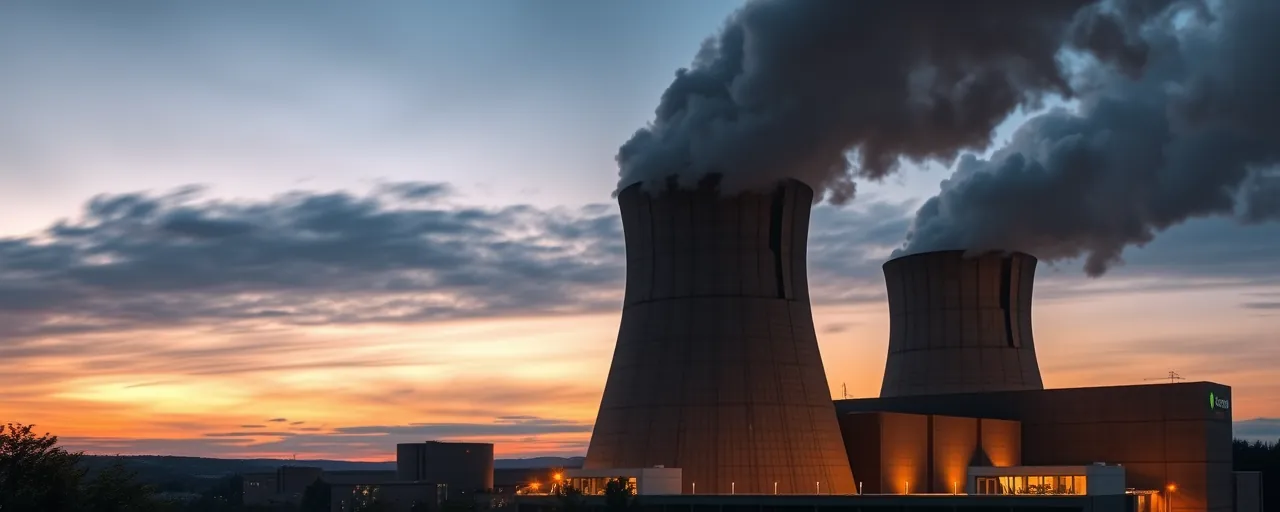A Surge in Energy Demand
New Jersey is staring down a power crunch. Data centers fueling artificial intelligence, new factories, and other high-energy industries are pushing electricity demand to new heights. PJM Interconnection, which manages the regional grid, predicts a 40 percent increase in usage over the next 14 years. This trend echoes across the U.S., where similar pressures are reshaping energy planning.
The state relies heavily on its three nuclear reactors—Salem 1, Salem 2, and Hope Creek—which produce 40 percent of its electricity and 85 percent of its carbon-free power. These plants have been vital for years, but they can’t keep up with future needs. To address this, the New Jersey Board of Public Utilities is seeking input on adding up to 10 gigawatts of nuclear capacity by 2035.
This effort aligns with the state’s goal of 100 percent clean electricity by 2035, mandated by the Global Warming Response Act. Yet, the challenge isn’t just emissions. Keeping power reliable and affordable for residents and businesses is just as critical, especially as energy costs weigh on household budgets.
The Case for Nuclear Expansion
Nuclear power stands out for its ability to deliver steady, carbon-free electricity day and night. Unlike wind or solar, which fluctuate with weather, nuclear plants run consistently, making them a lifeline for a grid facing unpredictable demand. New Jersey’s existing reactors have already saved ratepayers billions by stabilizing prices compared to pricier fossil fuel alternatives.
Emerging technologies, such as small modular reactors and advanced designs, offer improved safety and potentially lower costs. State officials and energy planners view these innovations as a way to meet rising demand while advancing decarbonization goals. The idea is to build a more resilient grid that can handle growth without harming the environment.
Still, obstacles loom. Nuclear projects demand huge upfront investments, and past U.S. efforts have seen costs spiral. Environmental advocates, while open to clean energy solutions, stress the need for safe waste management and rigorous oversight to minimize risks.
Weighing Costs Against Savings
Affordability is a pressing issue for New Jersey households. In 2024, PJM’s capacity auction showed that wind and solar resources slashed electricity prices by 60 percent, saving ratepayers $1.1 billion. Nuclear power, though expensive to build, can lock in long-term savings by reducing dependence on volatile fossil fuels.
Critics, however, highlight the financial risks. Projects like Georgia’s Vogtle plant ran billions over budget, raising fears of similar issues in New Jersey. The state’s request for information prioritizes protections for ratepayers, exploring financing models that avoid sharp bill increases.
Federal policies could help. Recent tax credits and loan programs aim to make nuclear projects more feasible. Yet, some energy experts advocate for private-sector-led approaches, arguing that market competition can drive efficiency and keep costs manageable.
A National and Local Debate
New Jersey’s nuclear plans mirror a broader U.S. trend. Nuclear power accounts for nearly half of the nation’s carbon-free electricity, cutting 470 million metric tons of CO2 each year. National targets call for 200 gigawatts of new capacity by 2050, blending advanced reactors with upgrades to aging plants.
Perspectives vary widely. Many environmental groups support nuclear as a partner to renewables, but others push for faster wind and solar growth, citing simpler deployment. Energy security advocates, meanwhile, highlight nuclear’s role in reducing reliance on imported fuels, especially as global electricity needs climb.
In New Jersey, the path forward hinges on balancing technical, financial, and environmental factors. Public feedback, due by June 23, 2025, will help shape decisions on everything from plant locations to safety protocols.
What’s Next for New Jersey
New Jersey’s nuclear vision is ambitious. If executed well, new reactors could deliver clean, dependable power for decades, supporting both industry and residents. But miscalculations could lead to budget overruns or delays that erode public confidence.
The state’s request for information marks an early stage, not a done deal. By gathering input from stakeholders, New Jersey aims to craft a plan that’s both bold and practical. Clear communication will be essential to ensure residents grasp the benefits and trade-offs.
As the push for cleaner energy accelerates globally, New Jersey’s choices could inspire others or highlight pitfalls. Success will depend on meticulous planning, strong oversight, and a focus on serving the public’s needs.
